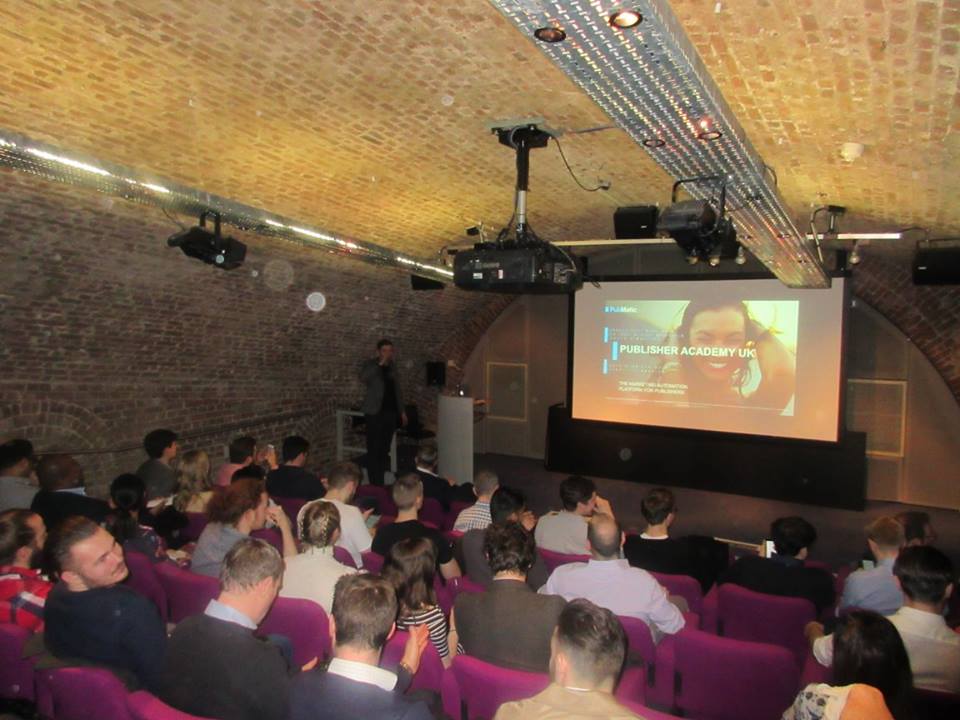Last month, we hosted our first Publisher Academy of 2016 in London, our 16th so far. Designed to educate and empower publishers to make the most of their digital assets, this time, we delved into the much talked-about topic of header bidding. We kicked off the afternoon with a deep dive into the evolution of header bidding and the landscape as it stands today. This was followed by a view from the buy-side provided by guest speaker, Charlie Ashe, Head of Digital Strategy at VE Interactive, and we rounded off the session with two workshops to really help our publisher partners understand the what, when and why of header bidding.
PubMatic’s header bidding tool, Decision Manager, has been in market for a number of years, however, it is only in the last six months that we have seen header bidding become a prerequisite in order to work with publishers. Why are publishers now beginning to care about header bidding, and for those who don’t – why should they?
Put simply, header bidding allows various demand sources to view an impression before it is sent to the ad server. This unifies all sales channels into one view, identifying which channel offers the highest CPM on an impression-by-impression basis, increasing CPMs and fill rates.
With developments and advancements in technology, we are seeing positive results from header bidding integrations into publishers’ platforms, which is leading to increased adoption rates for the tactic. At PubMatic, we process more than 15 billion ad impressions per day, reaching approximately 600 million unique users globally, per month. We have seen upwards of 50% average increases in CPMs with publishers that are using header biding on their platforms, compared to those without. In addition, publishers running both yield tags and header bidding have seen their CPMs often double.
Results weren’t the only topic of conversation, however. One of the trends that was highly discussed during the session was latency, i.e. page load times. From the time it takes for a bid to be made to the ad server making a call, every second counts. If publishers do not allow enough time for ample bids, they limit their monetisation returns. If they wait too long, then the impression opportunity may get lost and the user may navigate away. In other words, understanding and optimising timing for a header bidding solution is critical.
Publishers also need to take into consideration what other elements could effect latency, such as issues with the browser or device. Older browsers have significantly higher latency than newer ones and when looking at devices, mobile, and in particular android, have higher latency than desktop. Publishers need to test and experiment with variations in order to achieve the best balance for their site in order to ensure that they are monetising their inventory to the best of their ability, whilst maintaining a high-quality user experience.
Offering perspective from the advertiser’s point-of-view, we heard from Charlie Ashe, Head of Digital Strategy at VE Interactive, who talked about why the demand side is also getting on board with header bidding, and why they prefer this model compared to previous options, such as waterfalls. Waterfalls focus on prioritizing bid in an inefficient manner, which results in loses in revenue for publishers and lost impression opportunities for advertisers. The demand side also favours header bidding because it allows them to see and access every impression and understand exactly what audience that impression is reaching. Header bidding evens the playing field in the open marketplace, bringing RTB back to its origins.
So where do we see the future of header bidding leading us? We will see publishers monetising ad inventory more efficiently and at higher CPMs, because advertisers are seeking higher-quality inventory with transparency into audiences. Consequently, we will see more audience-based buying, which in turn will result in advertisers reaching their desired audiences, rather than inundating the wrong consumers with irrelevant ads. This will open up opportunities for more exciting and creative ad formats which publishers will be able to integrate into their pages and create a more enjoyable user experience.
Advertising is moving to a data-driven buying model, and header bidding is changing the way in which those ads are bought, making it a more dynamic and competitive marketplace. Header bidding doesn’t mean that direct buying will disappear, but the shift ensures that PMPs and RTB are to be used as they were intended, in a defragmented marketplace, getting the best price for the publisher and reaching the correct audiences for the buyers.

We were delighted to have so many of our publishers attend the Publisher Academy, and hope that they found it an insightful and educational view into the world of header bidding. We look forward to running our next Publisher Academy next month, this time looking at mobile. Hope to see you there!
To learn more about header bidding, download PubMatic’s white paper, Decision Manager: Your Inventory. Your Rules.





